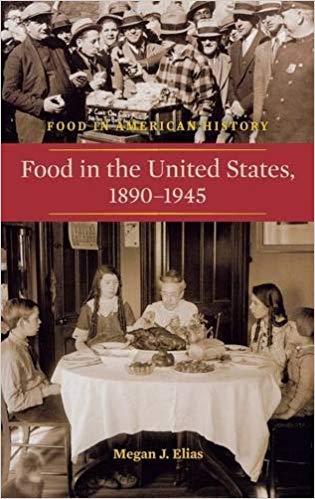by Megan J. Elias
From the publisher: No American history or food collection is complete without this lively insight into the radical changes in daily life from the Gilded Age to World War II, as reflected in foodways.
From the Gilded Age to the end of World War II, what, where, when, and how Americans ate all changed radically. Migration to urban areas took people away from their personal connection to food sources. Immigration, primarily from Europe, and political influence of the Caribbean, Latin America, and the Pacific brought us new ingredients, cuisines, and foodways.
Technological breakthroughs engendered the widespread availability of refrigeration, as well as faster cooking times. The invention of the automobile augured the introduction of “road food,” and the growth of commercial transportation meant that a wider assortment of foods was available year round. Major food crises occurred during the Depression and two world wars.
Food in the United States, 1890-1945 documents these changes, taking students and general readers through the period to explain what our foodways say about our society. This intriguing narrative is enlivened with numerous period anecdotes that bring America history alive through food history.
Megan J. Elias is assistant professor of history at Queensborough Community College, Bayside, NY. She is the author of Stir It Up: Home Economics in American Culture.
Greenwood, 2009

